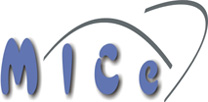 |
||||||||
 |
||||||||
|
|
||||||||
 |
 |
|||||||
THE TORONTO CENTRE FOR PHENOGENOMICS
MOUSE IMAGING CENTRE |
 |
|
|
Neurovascular AdaptationThe brain responds to not receiving an adequate supply of oxygen by growing more of the small blood vessels that permeate all brain tissue. This process can be induced by prolonged intense exercise or exposure to high altitude (low oxygen) environments. In disorders such as stroke and traumatic brain injury, growth of new blood vessels is considered critical to recovery; whereas in Alzheimer's disease and vascular dementia, new vessels either do not grow or grow abnormally. The goal of this project is to understand how structural changes in the vessel network of the brains of mice that complete a regime of voluntary exercise leads to improvements in blood and oxygen delivery. Medical imaging techniques including two-photon fluorescence microscopy, optical projection tomography, high field MRI and X-ray micro-computed tomography will be used to study remodeling of the vascular network over time and to characterize gas-induced vascular changes in blood flow. The response of the healthy brain to exercise will be contrasted against that of animals where sprouting of new blood vessels has been impaired by drug treatments and to mice that show a form of Alzheimer's disease. Taken together these experiments will interrogate the mechanisms by which structural changes in the blood vessel network support the survival of brain tissue in health and disease. Understanding the mechanisms by which a network of blood vessels is reorganized with corresponding gains or loses in capacity to deliver blood is critical to treating the many disorders (i.e. traumatic brain injury, Alzheimer's disease, stroke and cancer) where this reorganization plays a crucial role. Research is funded by the Canadian Institutes of Health Research
|
|
© 2004 The Centre for Phenogenomics |
|
 Back to Projects
Back to Projects